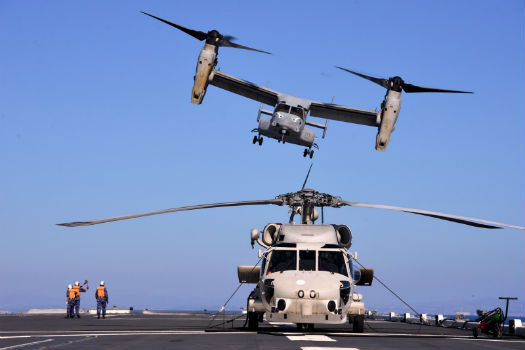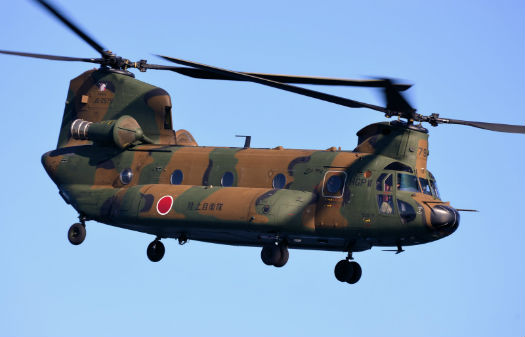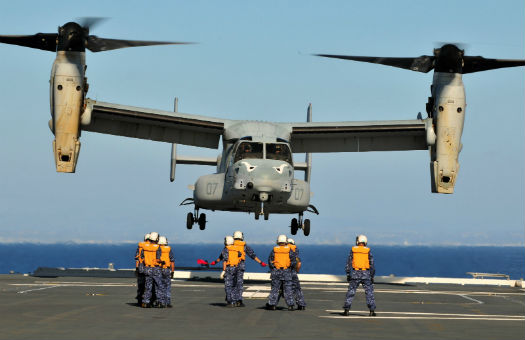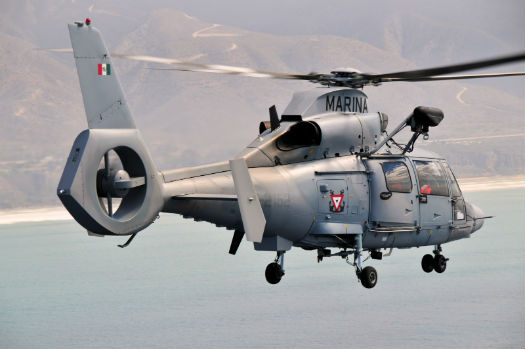
Japan recently ordered V-22 Ospreys, so Dawn Blitz was an opportunity for the Marine Corps version to operate aboard the Japanese ships.
Amphibious operations are among the most challenging missions undertaken by any military organization. They can also be some of the most difficult to coordinate across organizations. This is true even when it’s the United States Navy and Marine Corps working together; add other militaries to the mix, and the challenges expand to include differences in cultures, procedures, communications, and equipment, not to mention language barriers.
These were some of the challenges that were recently overcome in Exercise Dawn Blitz 2015, which ran from Aug. 31 to Sept. 10 off the coast of Camp Pendleton, Calif. A multinational amphibious exercise sponsored every other year by the U.S. Navy Expeditionary Strike Group Three and 1st Marine Expeditionary Brigade, Dawn Blitz brought together naval and aviation assets from Japan, Mexico, New Zealand, and the United States. Additional military personnel from Australia, Colombia, and Chile integrated into the strategic and operational planning process — giving all participants a better understanding of how each country conducts its amphibious operations, and how these forces can come together to respond to real-world crises.

The cockpit of the Mexican Navy’s Mil Mi-17.
This year’s training scenario involved a friendly nation inviting outside forces into the country for a humanitarian mission. As part of the scenario, amphibious ships launched rubber raiding craft with advance teams of reconnaissance units, then AAV-7 amphibious assault vehicles brought groups of Marines ashore. The exercise demonstrated command and control capability between the amphibious task force and the combined ground forces maritime commander, and provided the opportunity to test future amphibious operational concepts. It further allowed commanders and officers from participating nations to build personal relationships with each other, giving them valuable contacts for future operations.
“Dawn Blitz was an opportunity for us to practice our core amphibious capabilities and work with partner nations,” wrote Rear Adm. Daniel H. Fillion, Commander, Expeditionary Strike Group Three, at the conclusion of the exercise. “It was a chance for our partners to learn how we do things and for us to learn how they do things. This kind of understanding proves essential to our interoperability and makes us a better, more agile force that is ready to respond at a moment’s notice.”
Vertical was able to participate in some of Dawn Blitz 2015’s rotary-wing operations, traveling to and from the USS Boxer, a landing helicopter dock (LHD) type assault ship; the Japanese helicopter destroyer JDS Hyuga (which is close to a small LHD); and the Mexican Navy’s A412 Usumacinta (a former U.S. Navy Newport-class tank landing ship).

A Japanese CH-47J lifts from the Hyuga.
Following the retirement of the Boeing-Vertol CH-46E “Battle Phrog,” the U.S. Marine Corps’ main assault aircraft is now the Bell-Boeing MV-22B/C tiltrotor. The MV-22 now operates at squadron level and is the basis of the aviation component of a Marine Corps Expeditionary Unit (MEU). During the exercise the MV-22 was utilized in troop transport, humanitarian and casualty evacuation scenarios, and for movement of personnel back and forth to the ships. Because of its speed and cabin size, the MV-22 is proving to be a very useful transport aircraft during amphibious operations.
The JDS Hyuga is at this time the largest ship in the Japan Maritime Self-Defense Force, although two larger LHD-type ships will soon be entering service. The Hyuga’s normal complement includes three SH-60K Seahawk helicopters and an AgustaWestland MH-101 mine-sweeper helicopter. The ship can also accommodate the Japan Ground Self-Defense Force’s CH-47J Chinook and Fuji-built AH-64DJP Apache Longbow helicopters, and can land an MV-22 Osprey on the rear pad of the ship. Since Japan recently placed an order for five V-22s, U.S. Marine Corps Ospreys were landed on the ship during Dawn Blitz. Japanese helicopter operations had Apaches escorting the Chinooks as they brought troops to shore.

A VMM-163 MV-22C lifts off the rear pad on the Japanese JDS Hyuga.
The Mexican Navy operated the Russian-built Mil Mi-17 off the Usumacinta, while an Airbus Helicopters AS565 Panther operated off a Oaxaca-class patrol ship, the P164 Revolucion. The Mi-17 is primarily used for troop transport. While the Panther is considered a combat helicopter due to its left-side forward-firing .50-cal machine gun, it is a multi-mission airframe that is used for everything from personnel transport to ship-based search and rescue. Mexican helicopter operations during Dawn Blitz included support of its amphibious boat and ground operations, transport between the ships and shore, and any utility missions tasked to the aircraft. When Vertical asked the Mi-17 crews for their thoughts on flying this long-serving aircraft, the pilots remarked that the helicopter has plenty of power, is very reliable, and — with its ample cabin size — works well for moving large numbers of troops.
Another hovering machine used during Dawn Blitz was the Landing Craft Air Cushion hovercraft, or LCAC. These are used by both the U.S. Navy assault craft units and the Japan Maritime Self-Defense Force. LCACs transport armored vehicles, tanks, trucks, Humvees, cargo, and equipment. They also transport Marine Corps assault forces personnel. During Dawn Blitz, LCACs traveled from ship to shore and up onto the beach; once unloaded, they lifted and returned to the ship for another load of supplies. These awesome machines sped above the waves at over 40 knots with a full load, and up to 70 knots unloaded. During the exercise, Japanese Apaches provided “high cover” for the LCACs during their operations.

An Airbus Helicopters AS565 Panther in flight.
The training and interaction obtained through Dawn Blitz strengthened already solid relationships between the participating Navies, laying the groundwork for quick integration between them should the need arise. “Our partners have proven themselves as capable mariners and soldiers, and through superb coordination, we were able to demonstrate how our nations can work together to accomplish a common goal,” stated Fillion. “I look forward to future training opportunities with our partners, and I continue to be impressed with their resilience, aptitude, professionalism and ability to adapt to complex situations.”









